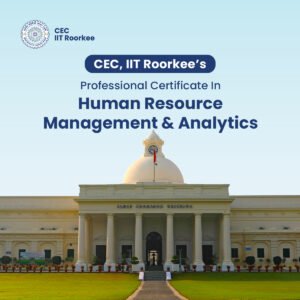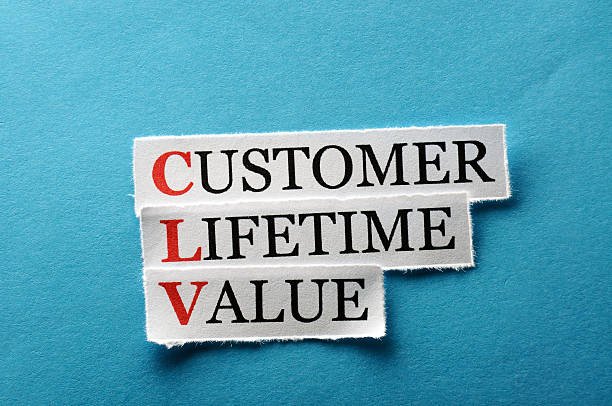Unlocking the potential of data has become an indispensable aspect of modern business practices, and the world of Human Resources (HR) is no exception. In today’s dynamic work environment, harnessing the power of data through HR analytics is crucial for informed decision-making, strategic planning, and, ultimately, organizational success.
Human Resource Analytics, often abbreviated as HR analytics, involves the application of analytical methods within the world of human resources. The objective is to enhance employee performance and maximize return on investment by leveraging data-driven insights.
Beyond merely collecting data on employee efficiency, HR analytics seeks to offer a comprehensive understanding of various processes. Through data gathering and analysis, it enables informed decision-making aimed at optimizing these processes for greater effectiveness and efficiency.
This blog delves into the HR analytics certification importance, highlighting its pivotal role in empowering HR professionals to leverage data effectively, drive insightful HR strategies, and contribute significantly to their organizations’ objectives.
Join us as we study the transformative Impact of HR Analytics Certification on Organizational Performance in unlocking new avenues for HR professionals to thrive in the data-driven landscape of the contemporary workplace.

What is HR analytics certification?
Emerging HR Metrics Certification Programs is like a supercharged toolkit that equips you with the skills to harness the power of data in the realm of human resources. It’s all about using data-driven insights to make smarter decisions, enhance employee engagement, and drive organizational success.
HR Analytics Certification is a credential that validates expertise and proficiency in utilizing data analysis techniques to make informed decisions in the field of Human Resources (HR). It involves the application of statistical methods, data mining, and predictive modeling to HR-related data such as employee performance, retention rates, recruitment effectiveness, and workforce demographics.
Individuals pursuing HR Analytics Certification typically gain skills in data collection, data cleaning, data visualization, and interpretation of results to provide actionable insights for HR strategies and decision-making processes. This certification can enhance career prospects for HR professionals by demonstrating their ability to leverage data-driven approaches to optimize organizational performance and address HR challenges effectively.
HR Analytics, which involves utilizing data to understand trends and behaviors within the workforce, has revolutionized the field of HR, making it more strategic, streamlined, and impactful than ever.
For years, HR professionals have shouldered the responsibility of overseeing various aspects of the employee lifecycle, including recruitment, training, performance assessment, and retention. Traditionally, these responsibilities relied heavily on subjective judgments and intuition. However, in today’s era of big data, a new paradigm emerges.
Benefits of Obtaining HR Analytics Certification
Despite the numerous benefits, many organizations still struggle to establish even the most fundamental aspects of HR Analytics. This challenge often stems from various obstacles encountered in the initial stages of building these capabilities. For instance, issues such as inadequate availability of clean data for reporting, subpar data management practices, lack of appropriate HR technologies, and skill gaps in developing, administering, and analyzing necessary tools are common hurdles.
- Enhanced Skills: Certification programs provide comprehensive training in data analysis techniques, enabling HR professionals to effectively conclude, analyze, and interpret data to make informed decisions.
- Improved Decision-Making: With the ability to analyze HR data, certified professionals can make evidence-based decisions regarding recruitment, talent management, employee engagement, and other HR strategies, leading to better outcomes for the organization.
- Competitive Advantage: In today’s data-driven business environment, employers value professionals who possess analytical skills. HR Analytics Certification sets individuals apart from their peers, making them more competitive in the job market.
- Career Advancement: Certification demonstrates a commitment to professional development and proficiency in HR analytics. It can open up opportunities for advancement within the HR field, including roles such as HR analyst, HR data scientist, or HR manager.
- Strategic Impact: Certified professionals can contribute to the organization’s strategic goals by providing insights that drive performance improvements, cost reductions, and increased efficiency in HR processes.
- Adaptability: HR Analytics Certification equips professionals with the skills to adapt to technological advancements and evolving trends in HR analytics, ensuring they remain relevant and valuable in their roles.
- Increased Credibility: Employers and colleagues are more likely to trust the insights and recommendations of certified HR analytics professionals due to their demonstrated expertise and adherence to industry standards.
- Networking Opportunities: Certification programs often provide opportunities for networking with other professionals in the field, allowing individuals to exchange ideas, learn best practices, and stay updated on industry trends.
How Can HR Analytics Certification Transform HR Practices?
With HR analytics certification under your belt, you’ll be armed with the ability to make data-driven decisions. No more shooting in the dark – every move you make will be backed by solid insights. By analyzing historical data, you’ll be able to forecast future trends and take proactive measures to retain top talent.
Say goodbye to endless hours sifting through resumes. HR analytics certification teaches you how to leverage data to streamline the recruitment process, identify the best candidates, and ensure a seamless hiring experience. Happy employees are productive employees. With HR analytics certification, you’ll learn how to gauge employee satisfaction, pinpoint areas for improvement, and implement strategies to boost engagement levels.
Ultimately, HR analytics certification is about driving tangible results for your organization. Whether it’s reducing turnover rates, improving performance metrics, or maximizing ROI on HR initiatives, data holds the key to unlocking unparalleled success.
The Final Words
There are plenty of reputable institutions offering HR analytics certification programs both online and offline. From introductory courses to advanced certifications, there’s something for every skill level and learning style. But remember, obtaining HR analytics certification isn’t just about adding another credential to your resume. It’s about investing in yourself, staying ahead of the curve, and positioning yourself as a strategic leader in the ever-evolving field of human resources.
HR Analytics Certification can significantly enhance both individual career prospects and organizational performance by equipping HR professionals with the tools and knowledge needed to leverage data effectively in decision-making processes. So, what are you waiting for? Take the plunge, unlock the power of data, and elevate your HR game to new heights with HR analytics certification!
Key summary Pointers:
- HR analytics certification empowers decision-making with data-driven insights.
- It enables predictive insights to anticipate future trends and challenges.
- Certification optimizes recruitment processes for efficiency and effectiveness.
- It enhances employee engagement by identifying areas for improvement.
- Ultimately, HR analytics certification drives organizational success through informed decision-making.
HR Analytics Certification: Empowering Professionals for Modern HR Management
Imarticus Learning’s HR Analytics Certification program is designed to equip applicants with the necessary knowledge and skills required to effectively navigate the complexities of human resources management in today’s dynamic business landscape. Covering a diverse array of topics, including job analysis, recruitment strategies, performance management, diversity management, and more, the program provides a comprehensive understanding of modern HR practices.
Experience immersive learning with our hands-on approach. The program offers access to 3+ trending tools, 8+ case studies, and real-world projects, enabling students to gain practical knowledge and develop skills essential for success in the field.
Benefit from a blend of academic excellence from IIT Roorkee and industry insights from renowned companies. This combination ensures a holistic education, integrating theoretical knowledge with practical applications and empowering students to excel in their careers.
Take the initial step towards becoming a proficient HR analytics professional. Enroll now and unlock your potential in the evolving field of human resources management with Imarticus Learning’s HR Analytics Certification program.


















